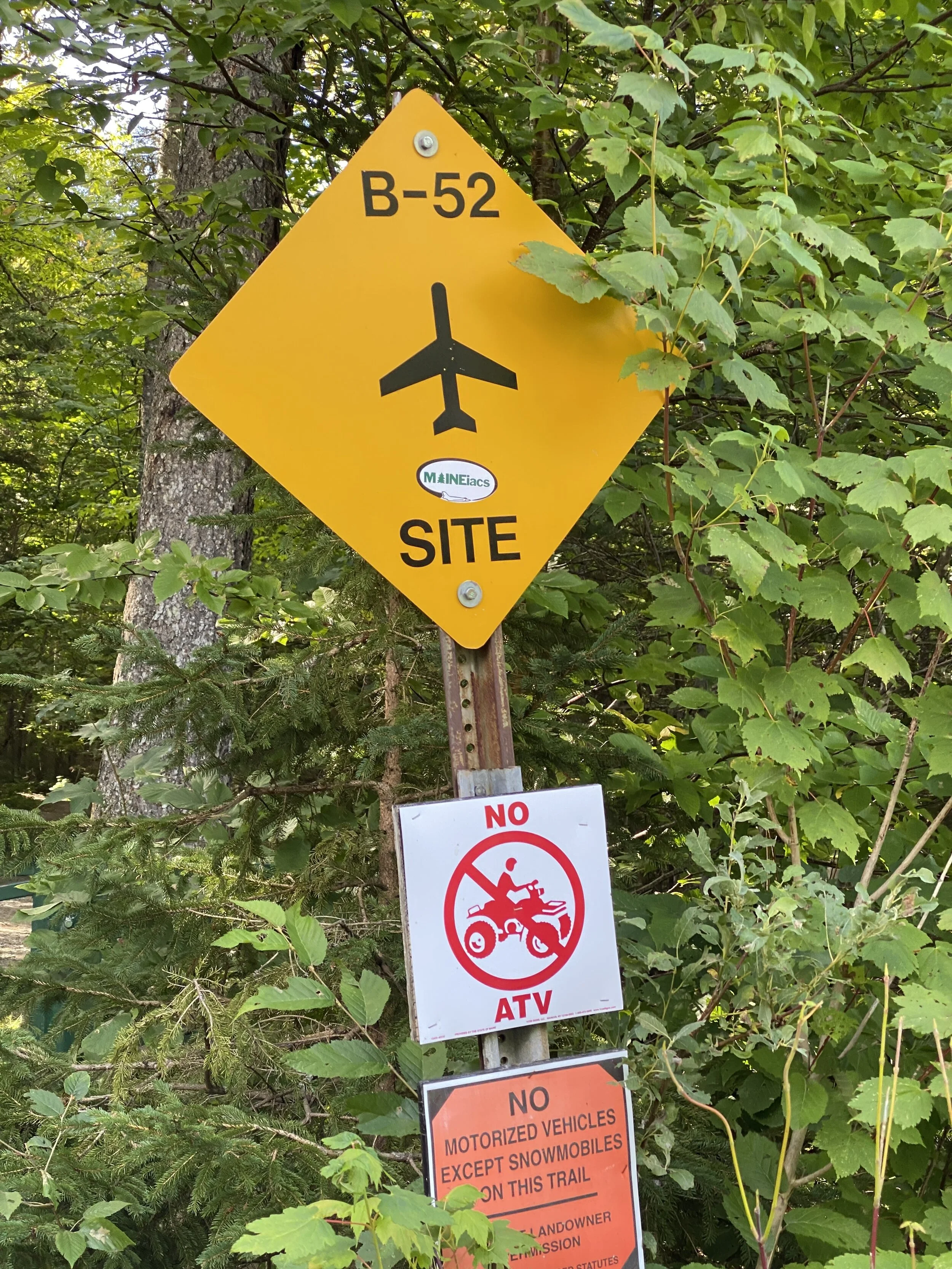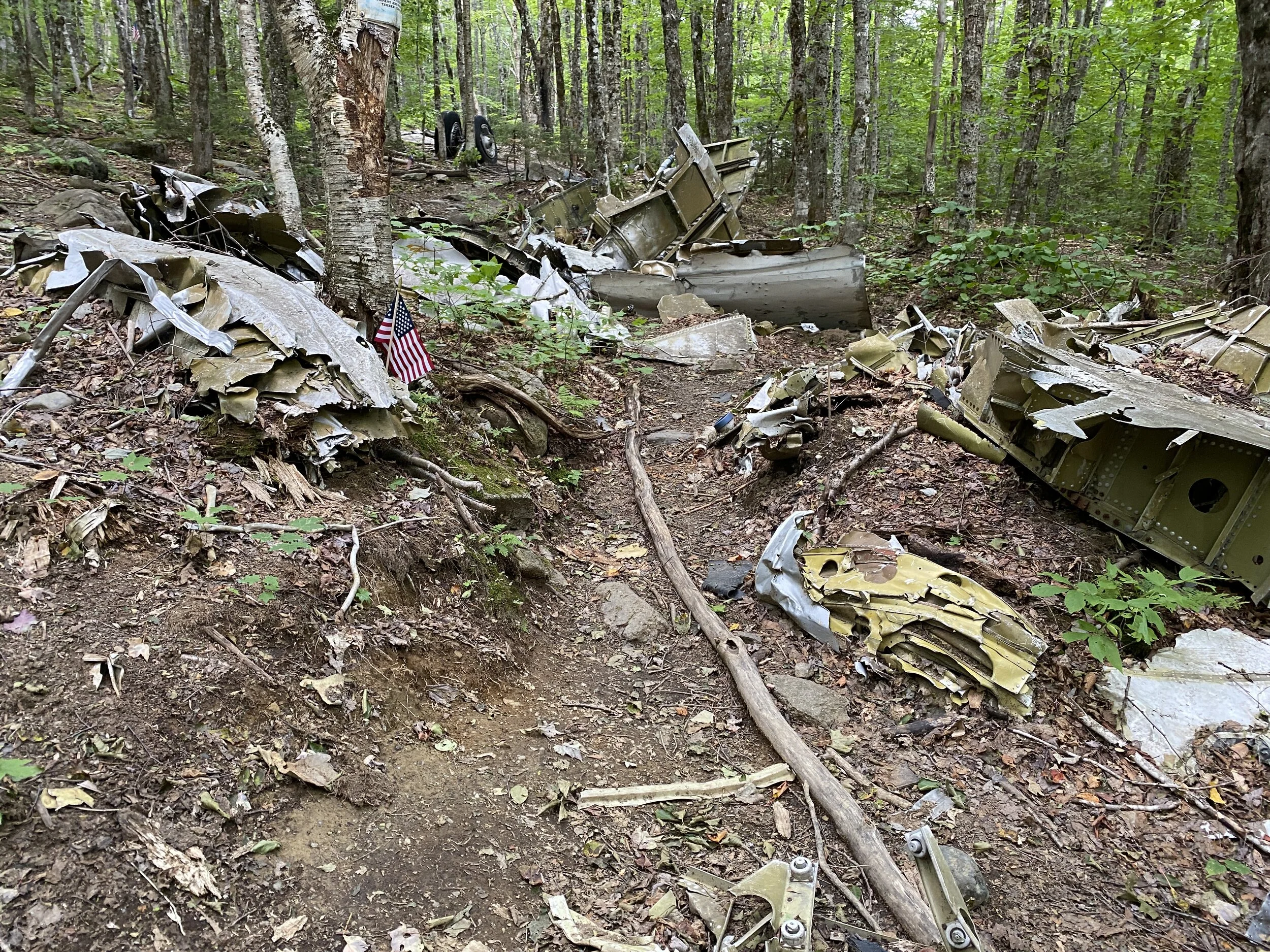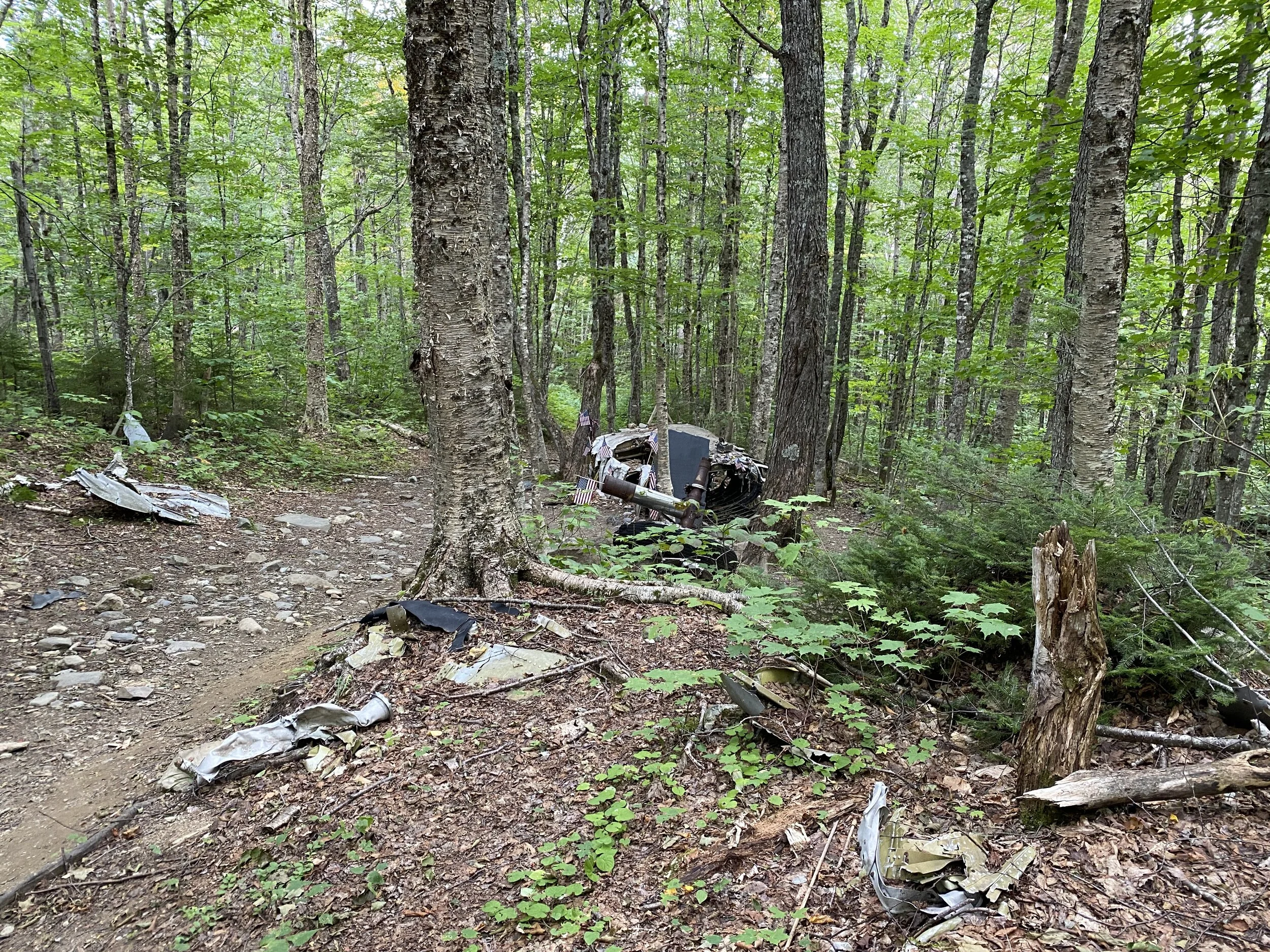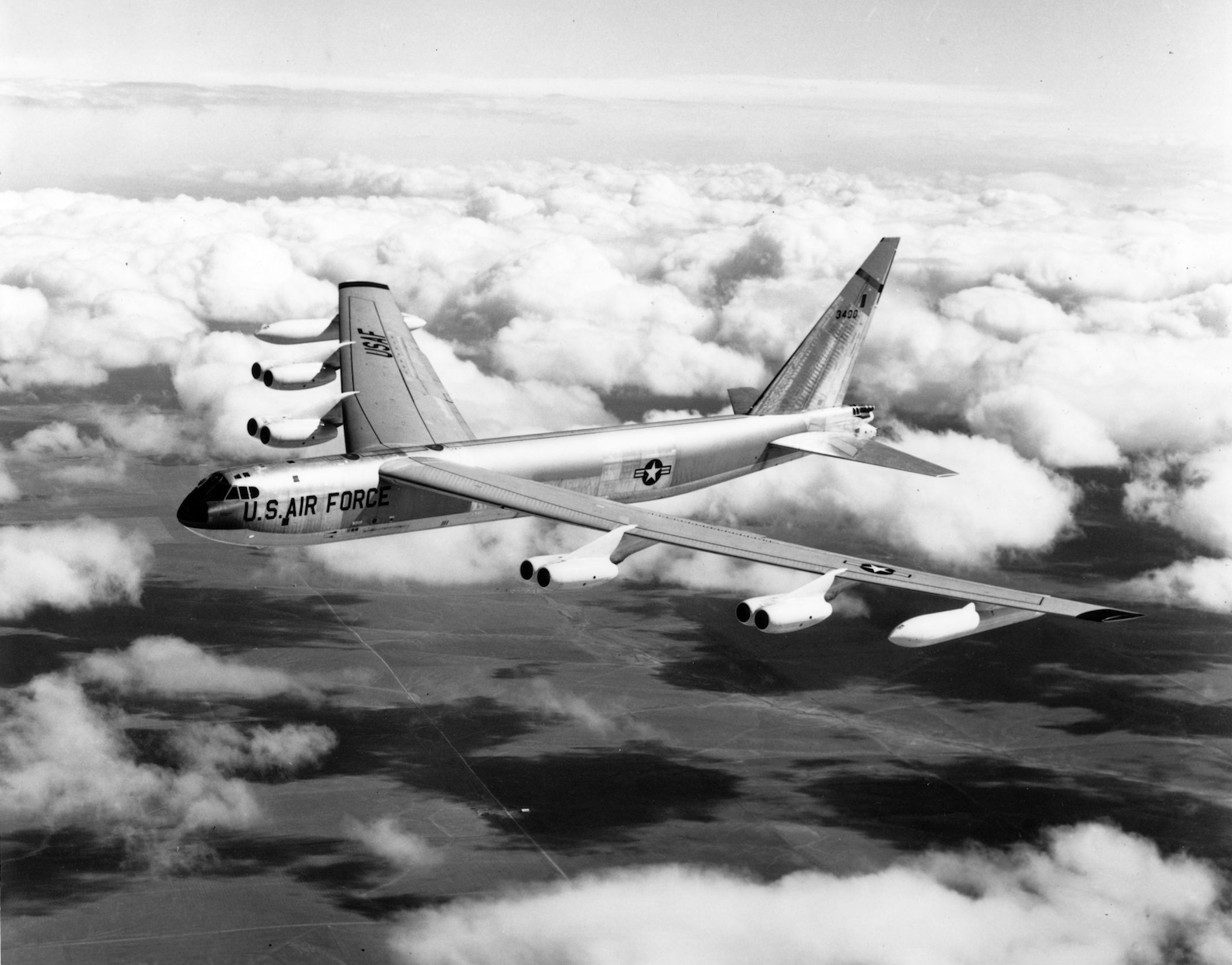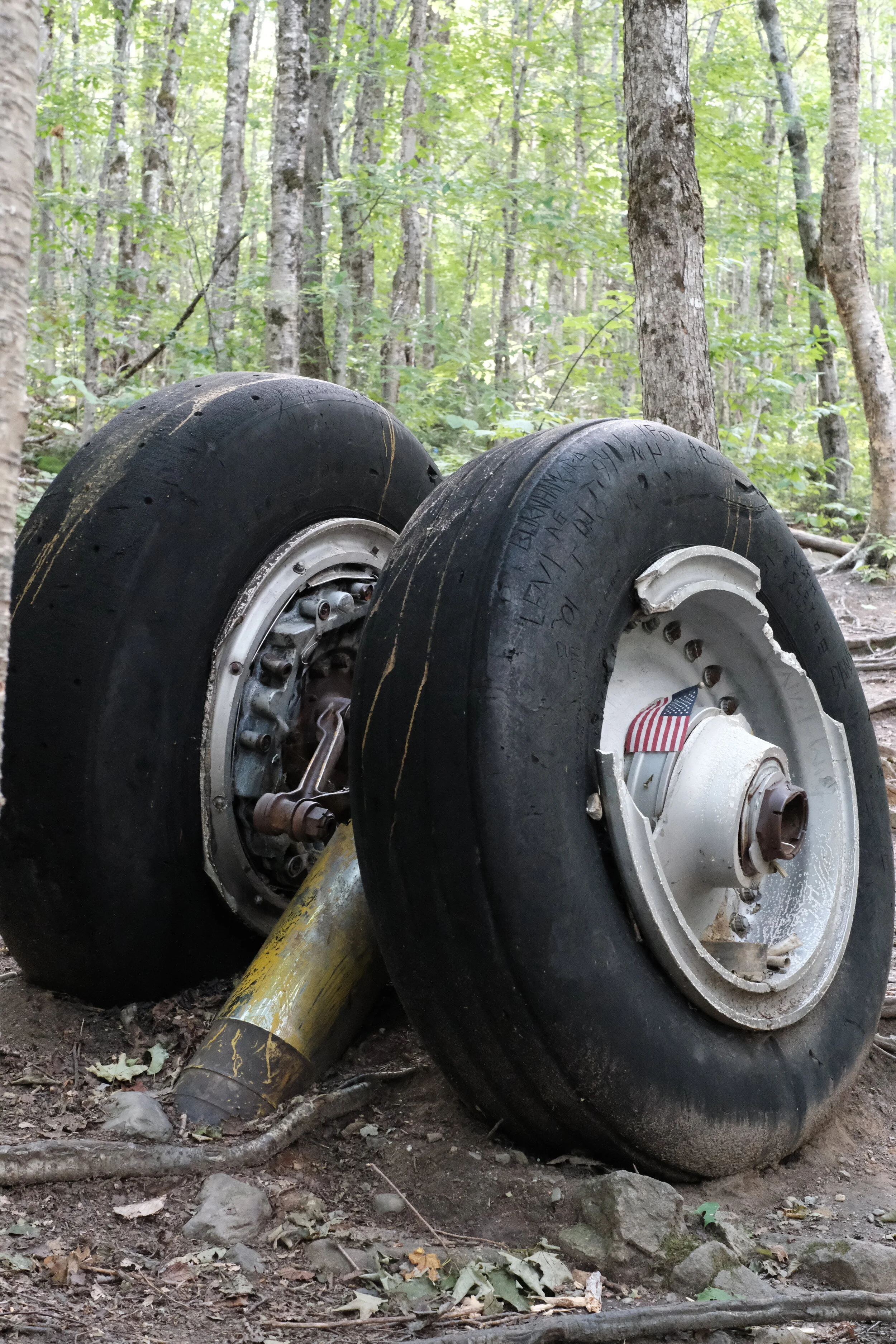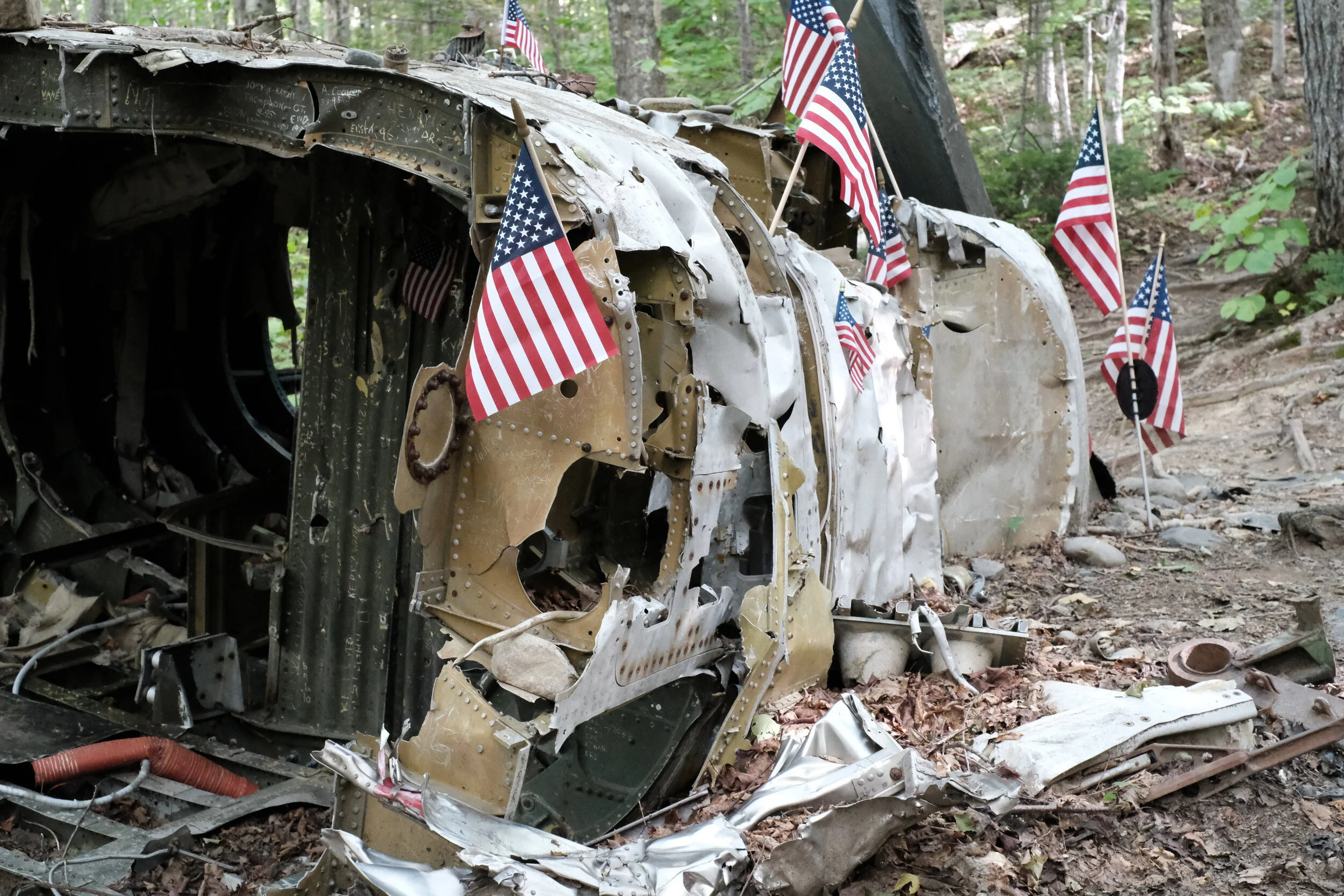The B-52 crash site in the Maine Highlands
On the way home from our recent camping trip to Lily Bay State Park, which sits on the shores of Moosehead Lake, Maine’s largest lake, we decided to visit the site of the 1963 B-52C crash, located about 12 miles away. Those 12 miles took more than 30 minutes and certainly put our 2002 VW Eurovan Weekender through its paces. At about every mile, I asked G if we should turn around and just give up. Undeterred by the rough terrain of the logging roads, the lack of cell service, and feeling like I had gotten us completely lost, G deftly maneuvered the van to its eventual stopping point, the memorial site of the crash. When we pulled in around 9:30a, we were the only car in the small lot. We were soon joined by a few others and by the time we left, there were probably 10-15 people at the site.
I’ve been putting off writing this post mainly because I’ve struggled to put into words what visiting the site was like—it was nothing like what G and I expected. I was expecting a memorial, perhaps a piece of the fuselage, but nothing prepared me for the wide area strewn with pieces of the airplane. Metal lodged into trees, the outline of a window, markings and rivets on large, somewhat-intact pieces. We were certainly standing on sacred ground, where 7 United States airmen lost their lives on a winter’s day in 1963. Two lived. How they managed to survive the crash—especially after seeing the terrain and the wreckage and imagining the weather that January—is beyond me. As I walked among the wreckage, I couldn’t help but wonder how I’d feel if I my loved ones had perished in that crash and what this site would mean to me. Would I find solace there? Or excruciating pain, seeing the fuselage and the reminders of the harrowing final moments? Both?
The plane was a United States Air Force Boeing B-52C Stratofortress. On January 24, 1963, the plane took off from Westover Air Force Base in Massachusetts. The flight was its first low-level navigation flight in what was intended to be a mission to practice flying at low altitudes to avoid Soviet radar. Nine men were on board. According to this page, the “B-52 Stratofortress-C, an $8 million aircraft, was unarmed for this training run, but was capable of carrying 2 nuclear weapons and 12 short range attack missiles.” Additionally:
Outside it was 14 degrees below zero with winds gusting to 40 knots. About 5 feet of snow lay on the ground. When the plane began to encounter turbulence the crew commander, Westover's Most Senior Standardization Instructor Pilot, attempted to fly above it, Just after it started to climb, a loud noise was heard, sounding like an explosion. The plane went into a 40 degree right turn and was pointing nose down. The pilot, Lt. Col. Dante E. Bulli, attempted to level the plane, but when he could not, he ordered ejection.
The navigator, pilot, and copilot were the first to eject. The navigator and the pilot survived. The copilot, while parachuting to the ground, hit a tree and was killed. The two survivors managed to remain alive during the overnight, when temperatures dropped to -28 degrees Fahrenheit. A granite memorial stands near the wreckage honoring the entire flight crew.
From the parking lot and past the signs indicating the significance of the site and reminding visitors to be respectful, there’s a short walk on well-worn trail through the dense woods. And then, everywhere, pieces of metal.
It’s hard to imagine the whole when confronted with so many pieces. I still can’t wrap my head around the disconnect between the two, the Cold War-era military jet and its disjointed pieces, preserved deep in the Maine woods for nearly 60 years. The “24 January 1963” page on the website This Day in Aviation History includes a photo of another Boeing B-52C, the same type as the 53-406 that crashed.
While G and I walked in stunned silence, trying to take in the enormity of the devastation, we weren’t alone. Another visitor caught my eye and expressed how surreal the scene was. He was visiting from Connecticut and said he oftens comes to the Moosehead region to snowmobile and has done so on the trails that cut through the site. In the winter, deep snow buries the wreckage that lay bare in the summer months. The Moosehead Riders Snowmobile Club is responsible for establishing the memorial site—and for begging the public to not vandalize and steal pieces of the wreckage. Recovered pieces that won’t be found at this site, however, are the three ejection seats used by the pilot, copilot, and navigator. According to this 2012 page, those are located at three locations in Maine: at the snowmobile club, at the Maine Air Museum in Bangor, and at the Moosehead Historical Society.
Prior to deciding to camp at Lily Bay State Park, I hadn’t known about the plane crash at nearby Elephant Mountain. Not until I started researching the area did I learn about the memorial site and more about the history of the crash. If you’re in the Maine Highlands and a history buff, the B-52 memorial site is definitely worth a visit.

